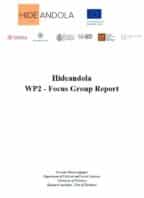Fonte:
HIDEANDOLA
Autore:
Giacomo Buoncompagni
The debate on the complex relationship between the media and justice and how jurists perceive journalists and how information workers relate professionally to the law are fundamental questions that have to do with democratic participation in public life.
The media’s relations with legal actors are often conflicting but complementary and contribute in different ways to the consolidation of a democracy or, conversely, may play a role in its failure.
The complexity of this problematic relationship lies in the fact that politics, justice, economics and information are intrinsically interconnected with contemporary society and culture.
Journalism and the audiovisual media are not only one of the greatest technical and cultural inventions, but also represent a ‘magic knot’ that constantly renews itself to predict the future of man and his communication in relation to the transformations of legal and economic institutions and the information policies adopted by each individual state (Affaya, 2012).
And even if today information is implicated in all the power relations linked to its industrialisation, it is still the condition for opening up to a globalised world, which is certainly less compact, more frayed and fuller of paradoxes, even before the Covid-19 pandemic exploded in February 2020.
We are confronted with a new open and connected space of communication and information, but one that seems to be devoid of any social and legal norms, and this fuels ‘incommunication’, hinders confrontation and deepening, and rationalises and standardises diversity (Abruzzese 2015; Brennan 2016; Wolton 2021).
Given this, there is actually a complementarity between the journalistic and legal professions in establishing good democratic practices, regardless of their limitations and interests.
On the one hand, the media reveal the underbelly of power and make massive use of their ability to control and disseminate information; on the other hand, the judiciary applies the law and pronounces judgments according to the principles of law, supported at times by information flows (Muhlmann 2004; Affaya 2012; Wolton 2021).
Starting from this theoretical framework, the results of a second phase of analysis will be presented below, linked to the HIDEANDOLA project, which investigated the relationship between the media and justice, between journalists and jurists, in relation to hate crimes and their hidden forms, focusing mainly on anti-Semitism, the main subject of the research.
After a first phase of more theoretical work (the study of national and international literature on the topic of anti-Semitism) and then an analysis of the media content on the same topic, the project required the organisation of 7 focus groups, consisting of 8-10 participants, belonging to three different public categories: journalists, lawyers-judges and victims of anti-Semitic hatred.


